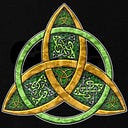Member-only story
Raising Hell: The Notorious History of the Hellfire Clubs
Gentlemen (and ladies) behaving badly

Hellfire clubs have been around for over 300 years. They have a reputation as dens of iniquity and riotous, orgiastic revelry. There is very little documentary evidence about the proceedings. (The first rule of Hellfire Club is apparently “You do not talk about Hellfire Club.”)
Rumors abound, and several people have attempted to bring them to life in literature and other mediums. Suffice it to say that nobody but club members knows what goes on in a hellfire club. What follows are the facts as we know them.
The Hellfire Club founded 1719

Philip, the Duke of Wharton (1698–1731), is credited with founding the first so-named Hellfire Club in 1719 when he was just 20 years old.
The primary purpose of Wharton’s club was the performance of satirical religious ceremonies, possibly inspired by the works of Voltaire and the then-popular fad among the upper classes of blasphemy.
Unlike later hellfire clubs, Wharton’s club accepted women as full members. The club held its meetings on Sundays at various locations around London.
According to Geoffery Ashe’s The Hell-Fire Clubs: A History of Anti-Morality, club members came to meetings dressed as characters from the Bible and dined on such delicacies as “Holy Ghost Pie,” “Breast of Venus,” and “Devil’s Loin,” while drinking “Hellfire punch.”
Wharton’s club was disbanded in 1721 when his political enemies convinced King George I to prohibit such “impieties.” He subsequently joined the Freemasons and became its Grand Master of England in 1722.
The Duke’s party-hearty lifestyle caught up with him eventually. He died a penniless alcoholic at the age of 32.
